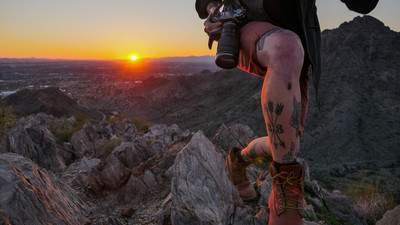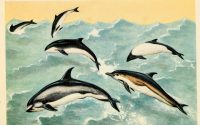If A picture is Worth a Thousand Words, then Video is Worth a Million
By Max Lulavy
A response to Brandon Kiki Wallick’s “Multimedia Reports: Indicators of Journalism in the Digital Age”
Explaining issues with the environment has seemed to be one of the most challenging issues experts have faced. The complex feedback loops and the convoluted web of stakeholders further complexes issues, forcing journalists to turn to more creative methods in portraying modern issues facing the environment. Kiki Wallick discusses how “New technology, practices, and tools are transforming journalism for the better,” in her piece titled “Multimedia Reports: Indicators of Journalism in the Digital Age” (Wallick 2019). She continues by writing, “Wyss believes that ‘visual storytelling has reached new heights in recent years, aided primarily by a range of new technologies.’” This is essential to understand in learning how the advent of the camera has taken over the journalistic world today more than ever.

Photo Credit: Washington Headquarters Services
According to Ross Collins, an instructor at North Dakota State University, the golden ages of photojournalism ranged from 1935-1975, as television started having larger impacts than an image on a page could ever have. Photography became essential in showing people the natural wonders of the world. Famous companies, like National Geographic, began using photos to do more than show, but rather to tell a story.
This art of storytelling became further expanded as video began to become commercially available to storytellers who wanted to create emotional feeling towards a subject. This is evident in Mark Neuzil’s The Environment and the Press in explaining a campaign to halt dam building, as part of the Colorado River Project, at Dinosaur National Monument due to the detrimental ecological effects that would occur. The beef of the campaign came from their use of visual images and films in creating persuasive media. Three short films were created including Two Yosemites and Wilderness River Trail, directed by David Brower and Charles Eggert. Historian Mark Harvey wrote, “Brower’s ability to captivate the public with images and descriptions of wilderness areas turned out to be his greatest gift.”
This is evident in the outcomes of these movies, for in 1950, before the issue was covered, only 13,000 people had visited Dinosaur National Monument. However, in 1954, after the film campaign, more than 71,000 visitors appeared at Dinosaur National Monument. The outcomes occurred due to the advancement in technologies in being able to invoke people’s emotions. This outcome is near impossible with pamphlet writing or photography alone; instead, the commercial availability of color film in the 1950s along with the pairing of music and sound was enough to show the beauty that could be lost if the dam were to be built, drowning the area in a reservoir.

Photo Credit: National Park Service
Today, the possibilities are even greater as technology has continued to progress at a rapid pace. With the wide availability of smart phone cameras, anyone can produce videos to show to the world. An everyday members of society, can thus be transformed into journalists themselves, giving rise to more thought provoking emotions and potential to invoke social change.
Sources:
Wyss, Bob. Covering the environment: How journalists work the green beat. New York: Routledge, 2008. Print.
Neuzil, M. 2008. The Environment and the Press From Adventure Writing to Advocacy. Evanston, Illinois: Northwestern University Press, 2008. Print.

